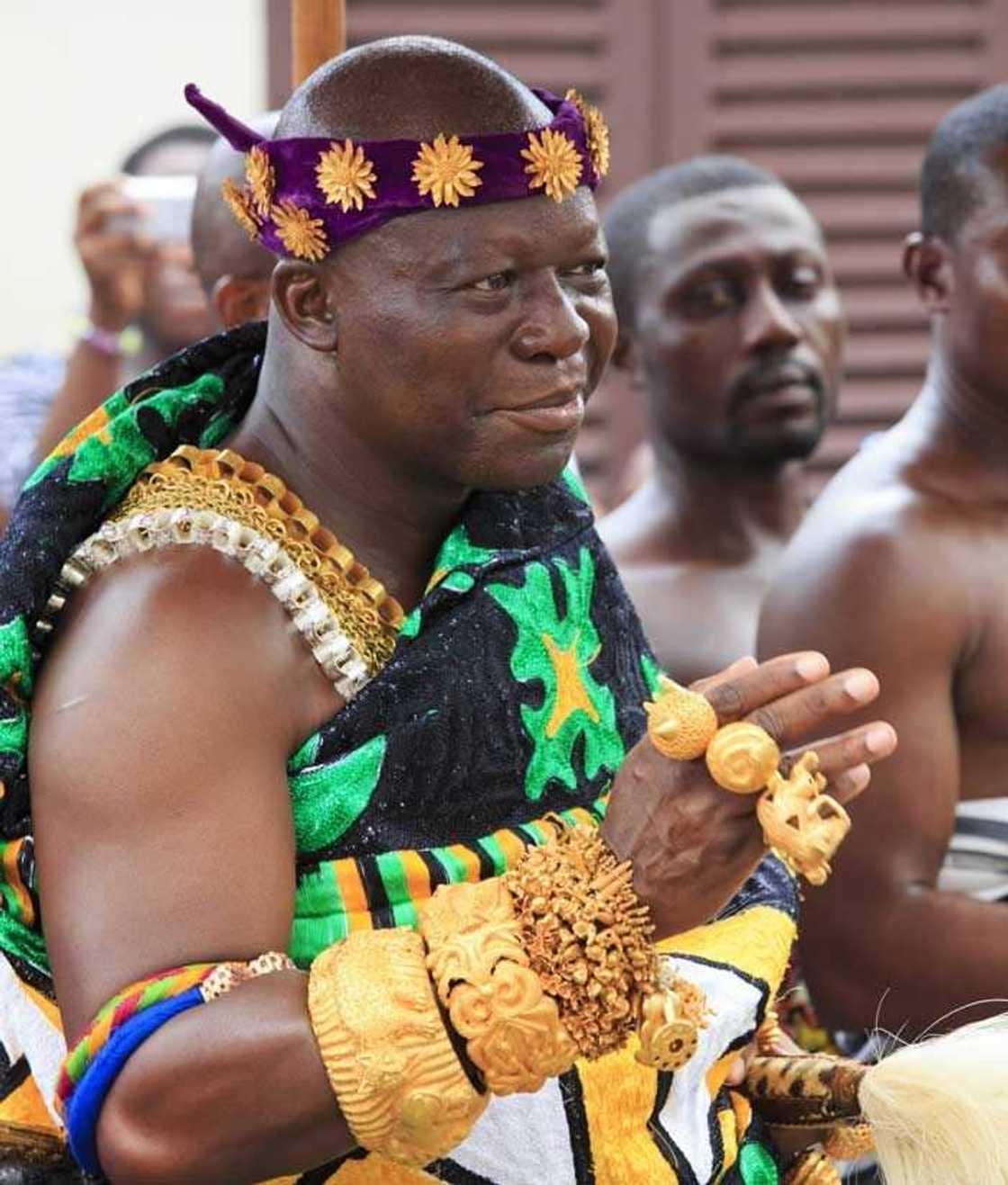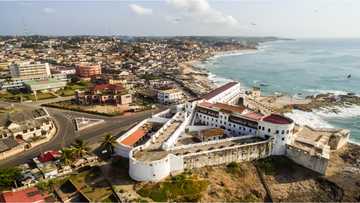List of all Ashanti kings in order: The Ashantehene timeline in Ghana
The Ashanti kingdom existed long before the emergence of what is now known as the Gold Coast or, more recently, Ghana, in Africa's western part. The indigenous people of Ashanti or Asante were part of a large ethnic subgroup. Later, some other subgroups unified with it as the leading ethnic group to form the Asante kingdom. Since then, different Ashanti kings have ruled.

Source: UGC
Although the Ashanti Kingdom has always existed as part of a larger ethnic group, it became a leading force in the late 17th century through Nana Osei Tutu I's effort. As the first Asante king, he ensured that the gold mines became royal property. In the 19th century, the empire diversified to the slave trade.
Overview of the Asante kingdom
The modern Asante kingdom dates back to 1697, after their first trade activity with the western world. Asante made the best use of this relationship with the Europeans, and Osei Nana Tutu decided to bring all the other Akan-speaking kingdoms under one ruling system. As the first of all Ashanti kings, he played a significant role in sustaining this legacy.
After bringing the majority of the formerly independent group under the new Ashanti Empire, Osei raised a state with political and military might. In organizing this ethnic alliance, he ensured that the other groups recognized his authority as the centre of the new kingdom. The new king was called Ashantehene, and Kumasi was recognized as the central power location.
Ashanti kings in order of throne ascension
Sixteen kings have ruled over the Ashanti Empire since its inception. The peculiarity of the Ashanti royal family is that the right to sit upon the ancestral royal Golden stool in the Ashanti Empire is matrilineal. This means that right to be king is passed based on blood relationship to the mother side.
Usually, the king hands over to his maternal nephew in the case of death or abdication. So, what is the ascension order like?
1. Otumfuo Nana Osei Tutu I
Who was the first Ashanti king? Nana Osei Tutu I is the first Ashanti king and ruled the empire between 1701 and 1717, although he was the fourth king to reign in Asante royal history. He succeeded his uncle, Obiri Yeboa, and created everything that the Ashanti dynasty would be built upon.
He ensured the creation of a binding constitution and a new kind of cultural festival referred to as the Odwira. Osei established a new kind of royal authority. In doing this, he createdcreated Golden Stool, which was a symbol of the ancestors of the new Ashanti Empire.
2. Otumfuo Nana Opoku Ware I
As the second Ashantehene, he ruled from 1720 until he died in 1750. He led his army to war and won a number of them. He is usually referred to as the builder of the empire even though he came after Nana Osei. Opoku Ware had two children: Adusei Atwenewa and Adusei Kra.
3. Otumfuo Nana Kusi Obodum
Nana Kusi Oboadum ruled for 14 years between 1750 and 1764. This was the period of the Oyoko Abphyen before Osei Kwadwo succeeded him.
4. Otumfuo Nana Osei Kwadwo Okoawia
He ruled for about 13 years between 1764 and 1777. A regent succeeded him before another Ashantene emerged.
5. Osei Kwame Panyin
This is probably the Ashantehene with one of the shortest reigns. This may be related to the fact that his reign was burdened with riots. He started ruling in 1777 until 1801 before taking his life in 1803 to stop a brewing civil war in Ashanti.

Source: Twitter
Before he emerged as the king, King Osei Kwadwo Okoawia earlier declared him his successor before his death in 1777. However, Okoawia's family members and councillors refused to abide by the late king's instruction. This led to an uprising by Atakora Kwame, but the northern provinces rose up in support of Panyin.
6. Otumfuo Nana Opoku Fofie
It isn't easy to qualify the reign of this king as he only ruled for about four months between December 1803 and March 1804.
7. Osei Tutu Kwame Asiba
Popularly referred to as Osei Tutu Kwame Bonsu, he was born during the late 1770s and succeeded his half brother, Opoku Fofie. He ascended the throne in 1804 and ruled until 1824. In 1807, his troops attacked the British fort at Anomabu during a skirmish with the Fantes. Because of that, the first physical conference between an Asantehene and a British Governor held.
Osei Tutu Kwame Asiba's reign witnessed the dominance of trade on the Gold Coast. In 1817, he welcomed the first British Mission to Kumase. This led to the first Anglo/Asante trade treaty on the 6th of September, 1817. He fought in many wars, notably against the Fante of the Southern Gold Coast.
8. Osei Yaw Akoto
This Ashantehene ruled for about ten years between 1824 and 1834 when he died.
9. Otumfuo Nana Kwaku Dua I
Nana Kwaku Dua I is one of the longest-reigning kings in the Asante Empire. He ruled for about 33 years after Osei Akoto died in 1834 until 1867. Because of the frequent human sacrifices in Ashanti that the Dutch witnessed, they had a conviction that the Ashanti had vast manpower.
Because of this, Kwaku Dua Panin signed an agreement with King William I of the Netherlands to provide Ashanti recruits on the 18th of March, 1837. This was done in exchange for guns.
10. Otumfuo Nana Kofi Karikari
Kofi Karikari was Kwaku Dua I's grandnephew. An electoral majority chose him, and he reigned from the 28th of May, 1867. However, on the 26th of October, 1874, he was forcibly abdicated.
11. Otumfuo Nana Mensa Bonsu

Source: Twitter
He ascended the throne in 1874 and ruled for nine years before renouncing the throne in 1883. His sister, Yaa Akyaa, destooled and banished him from Kumasi that year. However, before his dethronement, he tried restoring the fortunes of Kumasi after its destruction in the 1873 war.
12. Otumfuo Nana Kwaku Dua II
His reign lasted for barely two months as he died from an ailment.
13. Otumfuo Nana Prempeh I
Otumfuo Nana Prempeh I was the 13th king ruler of the Asante state of the Asante Kingdom and the Asante Oyoko Abohyen Dynasty. At birth, he was named Prince Kwaku Dua III of the Kingdom of Ashanti before taking the new name after he ascended the throne at 18 years of age.
Prempeh I ruled between 1888 and 1931, although there was a break in his reign between 1900 and 1924. This was after the new British authority in the region exiled him. He got his throne back in 1926 but assumed the title of the Kumasehene and not Ashantehene.
14. Otumfuo Nana Osei Agyeman Prempeh II
His reign lasted over 38 years between 1931 and 1970. He ascended the throne as the Kumasehene but got back the title of Ashantehene in 1935. He ruled as the Ashantehene until he died in 1970.
15. Otumfuo Nana Opoku Ware II
Nana Opoku Ware II was the Asante king between 1970 and 1999. He ruled the empire for about 29 years until his death.
16. Otumfuo Nana Osei Tutu II
After his predecessor's death, a regent reigned some months before Nana Osei Tutu II's eventual coronation on the 26th of April, 1999, as the 16th Ashante King. He continues to reign from then till date. He comes from the direct lineage of the first Ashantehene and holds several positions in Ghana and England.
As one of the respected kings in Ghana and Africa, Nana Osei Tutu II is the Sword Bearer of the United Grand Lodge of England. He is also the Grand patron of the Grand Lodge of Ghana. The Ashantehene is the Chancellor of the Kwame Nkrumah University of Science and Technology (KNUST).
The Ashanti Empire is today partly because of the commitment of various Ashanti kings that have reigned since its inception. Today, it is one of the most influential monarchical systems in Africa and around the world. So, it is not surprising that Ashantehene's decision carries weight in any socio-political discourse.
In the Asante nation, a king cannot rule legitimately except he sits on the Golden stool. As published on Yen.com.gh, several things point to the stool's sacredness. Its mysterious appearance is one thing. Also, doom and chaos that may befall the people if the Golden stool is destroyed or stolen is another thing.
Find out more about the history of the stool, what it stands for, and interesting facts about it from the post.
Source: YEN.com.gh








